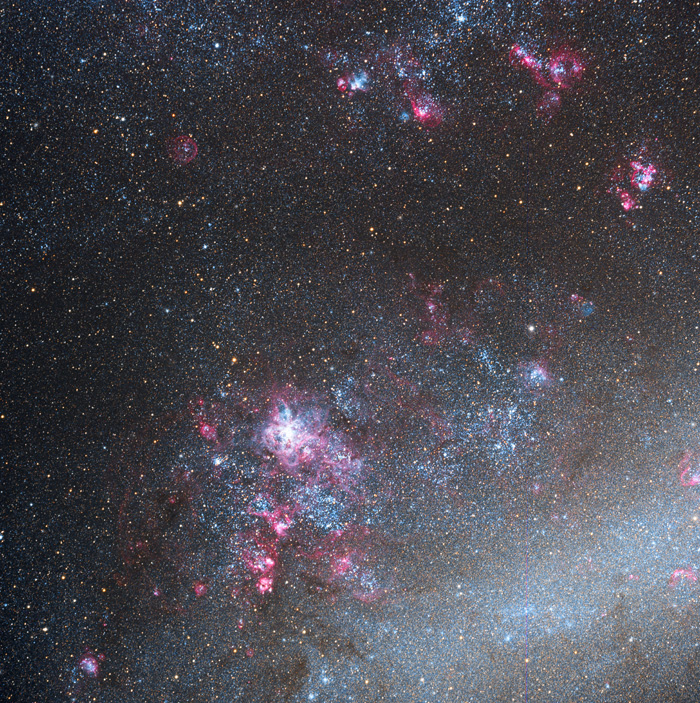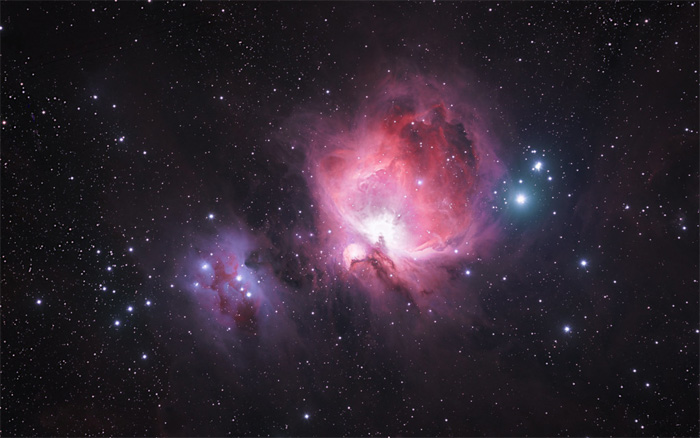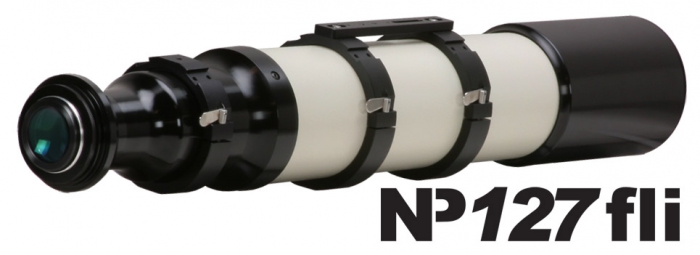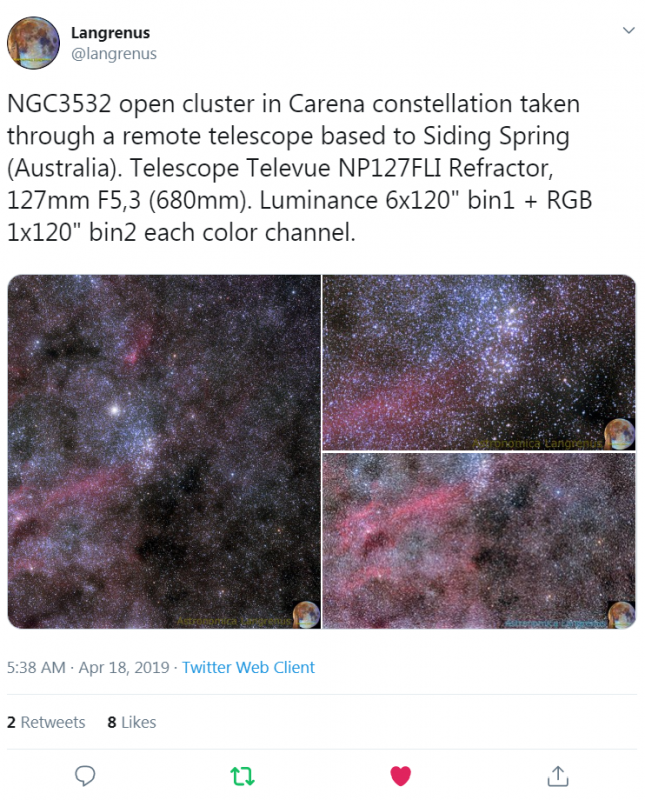Tele Vue’s NP127fli in the Land Down Under!

Our blog often profiles an imager employing one of our scopes. But this week we have a twist: we profile a single Tele Vue scope used by many imagers! It all began when we started spotting deep space images, posted on-line, created with our Tele Vue-NP127fli dedicated astrograph. All the images were made from Australia by different people. It turns out this scope is part of iTelescope.net’s collection of robotic scopes at Siding Spring Observatory. Labeled as the “T9” scope, it does wide-field imaging with the FLI ProLine PL16803 (52mm diagonal CCD) camera.
The LMC is a satellite galaxy of our Milky Way, about 160,000-light years away, and visible from southern latitudes. A large part of it consists of the Tarantula Nebula (also cataloged as 30 Doradus), whose glowing red gas is visible in the lower part of the above image. (Part of the star-filled central bar of the LMC is visible at the bottom-right). The Tarantula is a large cloud of hydrogen gas and dust where star formation continues to take place. In fact, the rate of star formation is the highest of any region in our Local Group of galaxies. The new stars in the Tarantula emit ultra-violet photons that energizes the hydrogen to glow red.
Jarrett Trezzo, the imager behind this image, tells us the following about his experience with the Tele Vue-NP127fli.
I really like the NP line of scopes for their excellent color correction and pinpoint stars — as well as the ability to cover a large camera sensor with almost no vignetting and nice star shape throughout.
Jarrett informs us he bought a Tele Vue-NP101is as a personal scope and his first-light image on AstroBin of NGC 6820 & NGC 6823 in Vulpecula has been posted today!

Above, the Orion (M42 or NGC 1976) on the right and the Running Man (Sh2-279) on the left are beautifully captured by Stacey Willams. By all means, click on the above image to experience the wispy details, halos of nebulosity around the stars, and dark lanes in the full-size image.
M42 is the closest “stellar nursery” to our planet. The red color in the image is from ionized hydrogen that has been excited by giant stars that are being born in the nebula. The wisps and folds are shaped by stellar winds that form shock waves in the nebula’s gas clouds.
The outline of a shadowy “Running Man” is seen in the nebulosity to the left of M42. This is a smaller region of star formation where the red glow of Hydrogen gas mixes with blue light reflected from the dust grains.
Stacey discusses below how this image came about.
While researching telescopes online I came across a remote observatory (iTelescope.net) which, after signing up, enabled me full online remote access to a range of different imaging telescopes directly from my own computer. After reading through the specifications of the telescopes available through this service, I decided that the Tele Vue NP127fli refractor with FLI Proline 16803 CCD at Siding Springs Observatory offered the field of view needed to capture the image of Orion that I had envisaged. After taking a few images what really struck me with this telescope was the amazing contrast and sharp detail which I feel really makes the Nebula “stand out” against the dark background. The fast focal ratio also allowed to me to capture quite a lot of detail with relatively short exposure times.
Great work Stacey!

When comet 46P/Wirtanen graced our skies at the end of 2018, the glowing green comet was a popular target for imagers. The greenish glow was caused by ionized cyanogen and diatomic carbon from water and volatile compounds that were broken apart and ionized by the Sun’s ultraviolet light. Thomas Zwach used the Siding Springs scope to capture the above image which was also featured on spaceweather.com’s Realtime Image Gallery along with others he took during the apparition of the comet.
Here’s a recent tweet with images of the open cluster NGC 3532 made with the NP127fli:
NGC 3532 is a star cluster also known as the “Firefly,” “Wishing Well,” “Football,” — or simply as Caldwell 91. Whatever you call it, this open cluster of stars in the constellation Carina is most easily visible from the southern hemisphere. Newer stars in the cluster glow blue while older ones have become red giants — giving the cluster a mix of star hues. It was also the first target of observation by the Hubble Space Telescope in 1990. The wide span of this cluster is a perfect match for the NP127fli astrograph.
-
- Tele Vue-NP127fli website page (mobile site)
- Tele Vue-NP127fli images made with FLI’s MicroLine 694 CCD Camera (mobile site)
- Why Choose Tele Vue Scopes article (mobile version)
Did you observe, sketch, or image with Tele Vue gear? We’ll like your social media post on that if you tag it #televue and the gear used. Example:
#televue #NP127fli #m42
Do you want your Tele Vue images re-posted on Tele Vue Optics’ Social Media accounts? Use this hashtag for consideration:
#RPTVO




